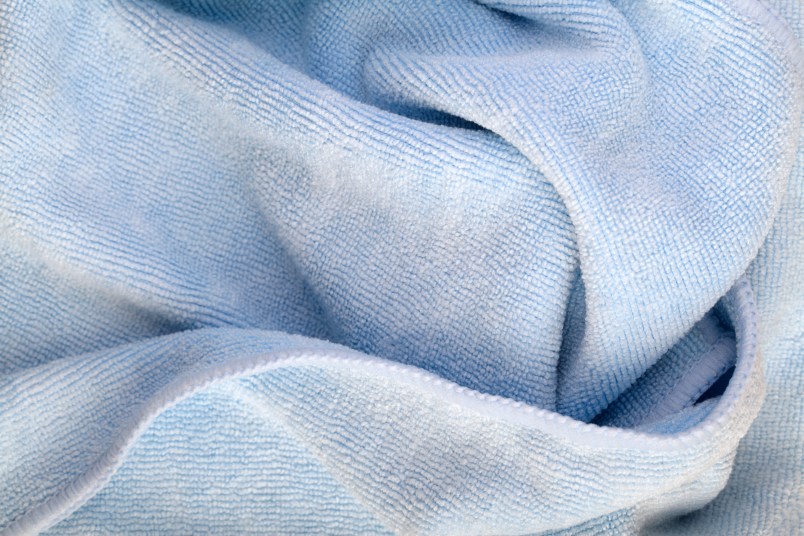How to Wash Microfiber Towels the Right Way

We’ve learned so many new things about cleaning in recent months. I mean, who knew it was best to wash your towels after just three uses? To complicate things even more, if you use microfiber towels, washing them isn’t as straight forward as you might think. It turns out that there’s a special way to do it that prevents damage and will help you keep your towels in great shape over time.
What is microfiber?
Microfiber is a synthetic fiber that is thinner than regular thread. Most microfiber towels are made of a blend of polyester and nylon, and the threads have a diameter of less than ten micrometers, which is even smaller than a thread of silk. Microfiber is used to make bath towels and cleaning towels, and they’re great because they dry quicker than cotton and other fabrics.
While we love microfiber for drying us off after a nice hot bath, washing microfiber towels the wrong way can lead to irreparable damage.
How to Wash Microfiber Towels
While throwing your towels in the washer and dryer might seem like common sense, microfiber is a material that needs to be treated in a special way if it’s going to last over time.
When washing your towels in the washer, choose the coldest setting! According to experts over at Microfiberwholesale.com, washing in high heat can damage your towels. Heat can actually cause your microfiber towels to melt! When the material melts, the open spaces between the threads will become closed and your towels will lose the ability to absorb water and moisture.
The worst part is, you might not even be able to tell that your towels have melted just by looking at them. A microfiber towel that has been melted will look the same as a good towel. To test if your microfiber towels have melted, try cleaning up a small spill of water on a hard surface. A melted towel will push water around rather than soak it up.
Another thing you should avoid when washing your microfiber towels is using fabric softener. Using fabric softener might feel like a natural thing to do to revive that fluffy, soft texture, but the experts say this could do more harm than good.
Fabric softener may clog up the holes in your microfiber and again, prevent the towel from being able to absorb moisture. Without aeration between the fibers, the towel loses its ability to soak up water and dry properly. So as good as your towels might smell after using it, steer clear of fabric softener.
You should also ideally wash microfiber on it’s own. Washing it with other materials like cotton can cause fine lint to clog up the open spaces in your microfiber and lead to damage. Microfiber also attracts lint, so be sure to clear the lint tray in your dryer beforehand.
And last but not least, the same rule about heat applies for drying. You don’t want to dry your towels in hot temperatures, as this will risk melting the material. Air drying your microfiber (microfiber tends to dry very quickly!) is arguably the best way to avoid heat damage, but if you can’t, just place them in the dryer on a cool or very low heat setting.
There you have it! Now you’ll never make the mistake of drying your microfiber towels the wrong way again. Happy laundry day!
















